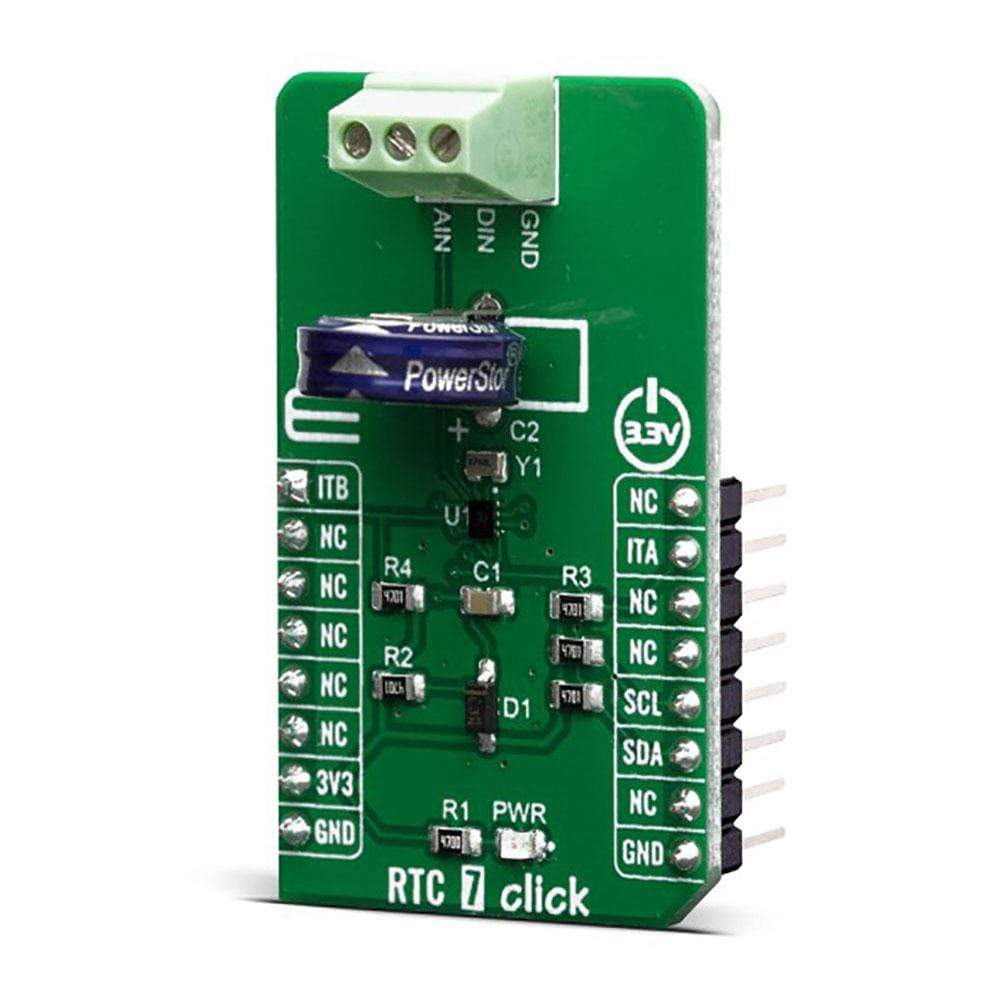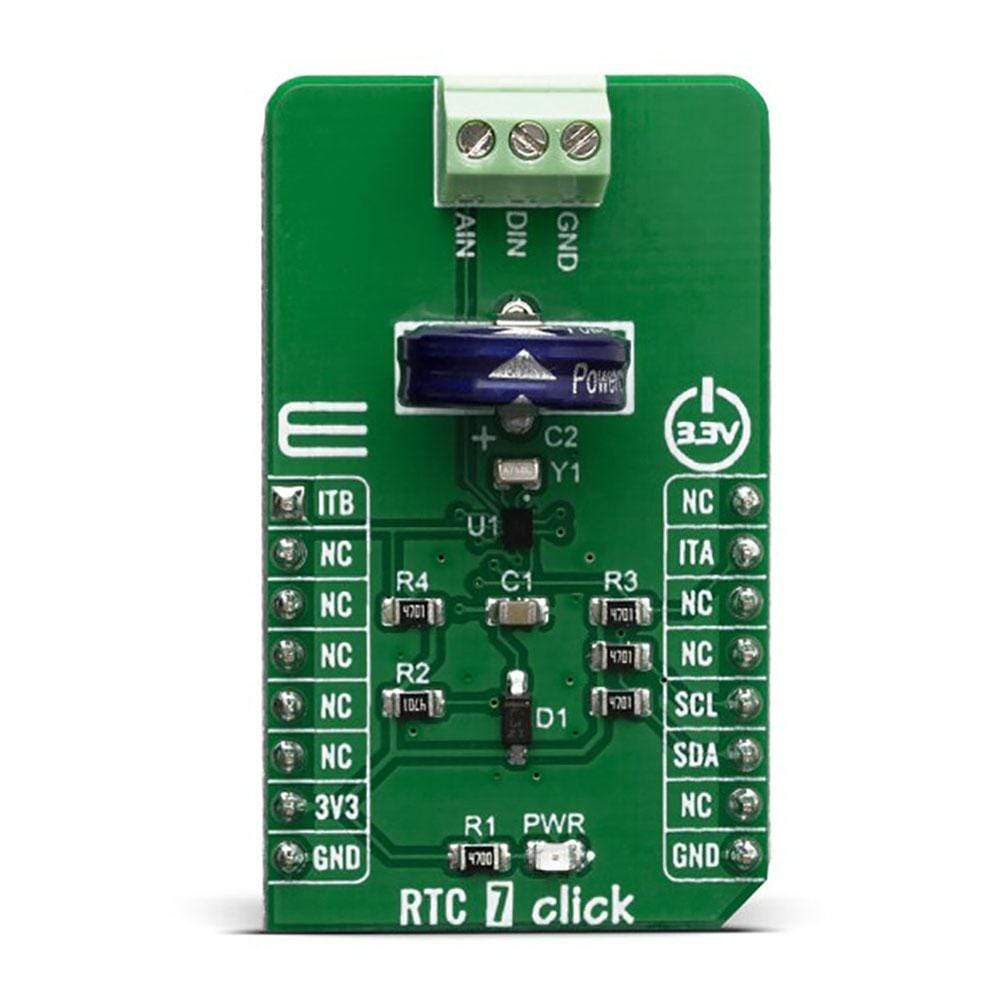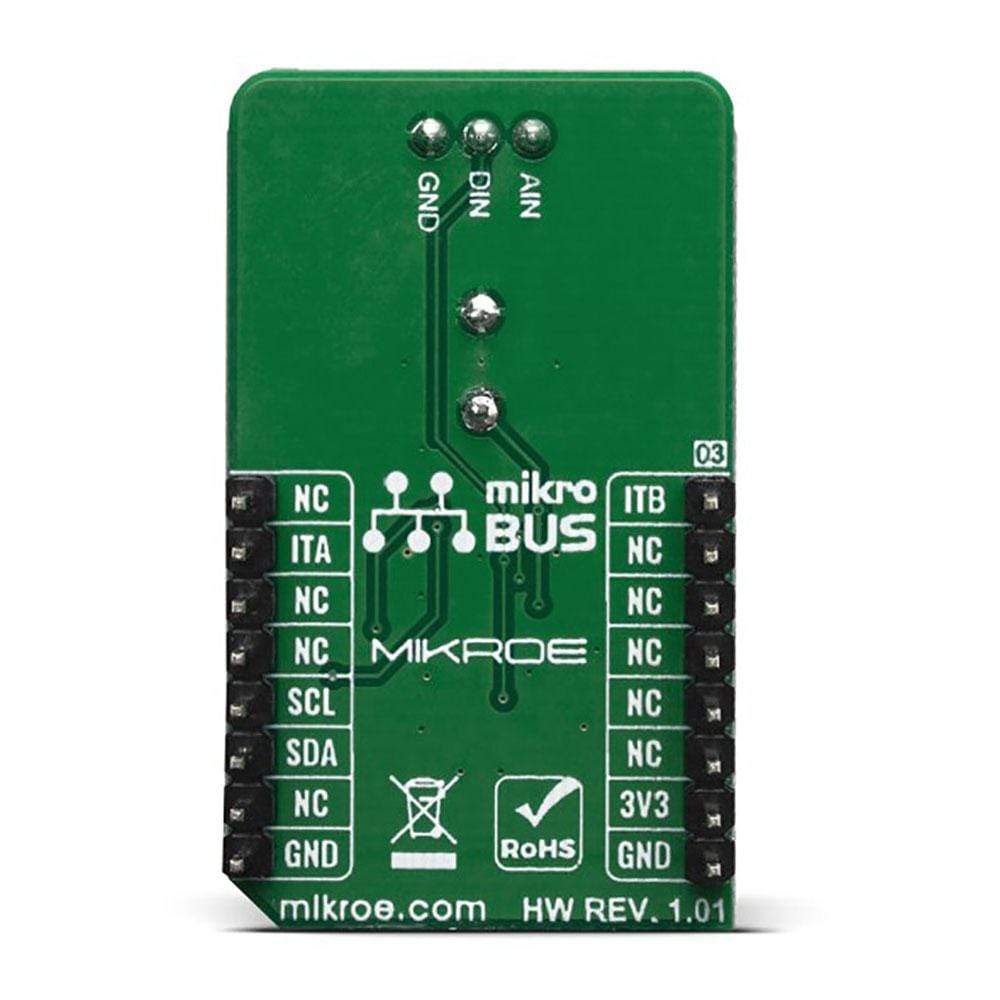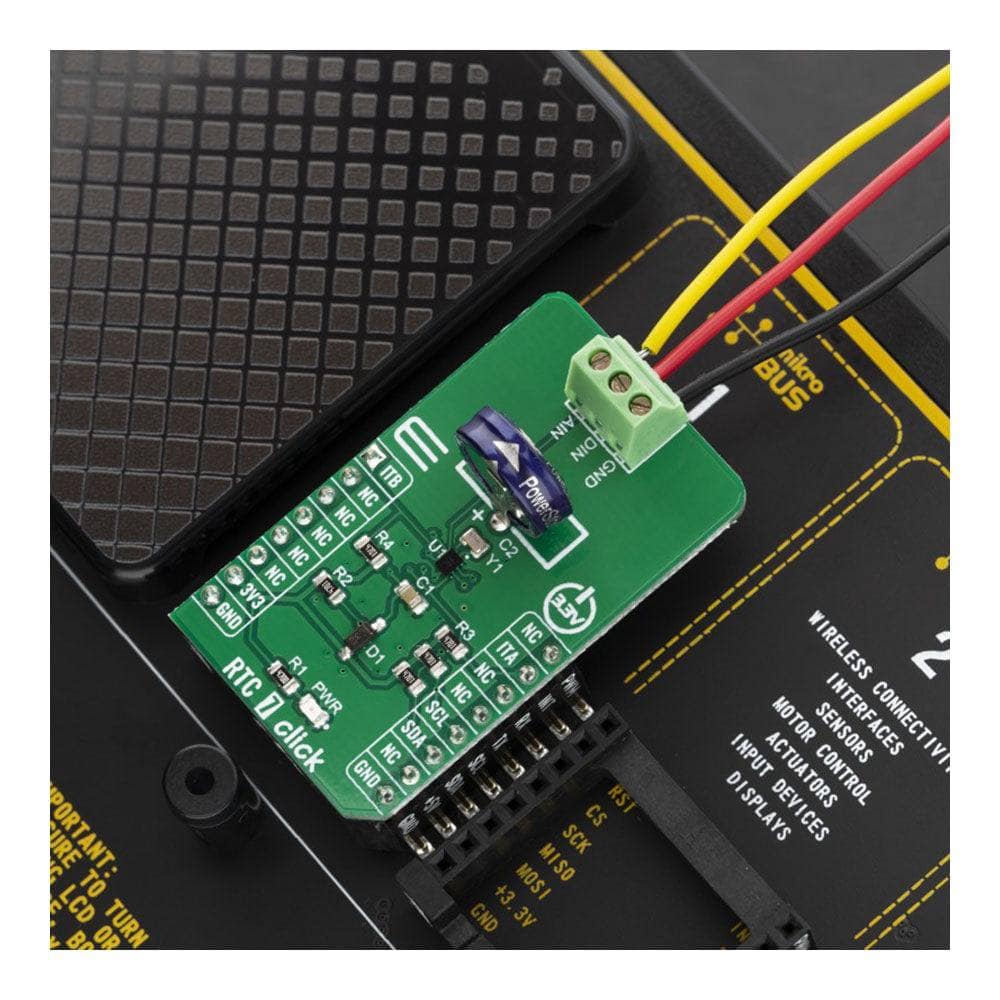



Overview
The RTC 7 Click Board™ is a real-time clock module that has an extremely low power consumption, allowing it to be used with a single button cell battery or a supercapacitor, for an extended period of time. The MAX31341B IC built on the RTC 7 Click Board™ is able to output the time in the binary-coded decimal (BCD) format. Integrated, factory calibrated XTAL operating at 32.768 kHz ensures a very low time deviation.
However, the RTC 7 Click Board™ has the onboard external, more precise crystal oscillator too. An advanced interrupt feature allows many different uses such as alarm function, countdown timer function, external event detection function, using analogue and digital inputs and much more.
Downloads
Le RTC 7 Click Board™ est un module d'horloge en temps réel qui présente une consommation d'énergie extrêmement faible, ce qui lui permet d'être utilisé avec une seule pile bouton ou un supercondensateur, pendant une période prolongée. Le circuit intégré MAX31341B intégré au RTC 7 Click Board™ est capable de générer l'heure au format décimal codé binaire (BCD). Le XTAL intégré et calibré en usine fonctionnant à 32,768 kHz garantit un très faible écart de temps.
Cependant, le RTC 7 Click Board™ dispose également d'un oscillateur à quartz externe intégré, plus précis. Une fonction d'interruption avancée permet de nombreuses utilisations différentes telles que la fonction d'alarme, la fonction de compte à rebours, la fonction de détection d'événements externes, l'utilisation d'entrées analogiques et numériques et bien plus encore.
| General Information | |
|---|---|
Part Number (SKU) |
MIKROE-2976
|
Manufacturer |
|
| Physical and Mechanical | |
Weight |
0.02 kg
|
| Other | |
Country of Origin |
|
HS Code Customs Tariff code
|
|
EAN |
8606018716661
|
Warranty |
|
Frequently Asked Questions
Have a Question?
Be the first to ask a question about this.




